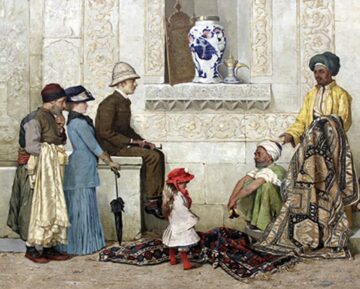Peter Frankopan, Marie-Louise Nosch, and Feng Zhao in Aeon:
 Some say that history begins with writing; we say that history begins with clothing. In the beginning, there was clothing made from skins that early humans removed from animals, processed, and then tailored to fit the human body; this technique is still used in the Arctic. Next came textiles. The first weavers would weave textiles in the shape of animal hides or raise the nap of the fabric’s surface to mimic the appearance of fur, making the fabric warmer and more comfortable.
Some say that history begins with writing; we say that history begins with clothing. In the beginning, there was clothing made from skins that early humans removed from animals, processed, and then tailored to fit the human body; this technique is still used in the Arctic. Next came textiles. The first weavers would weave textiles in the shape of animal hides or raise the nap of the fabric’s surface to mimic the appearance of fur, making the fabric warmer and more comfortable.
The shift from skin clothing to textiles is recorded in our earliest literature, such as in the Babylonian Epic of Gilgamesh, where Enkidu, a wild man living on the Mesopotamian steppe, is transformed into a civilised being by the priestess Shamhat through sex, food and clothing. Judaism, Christianity and Islam all begin their accounts of their origins with a dressing scene. A naked Adam and Eve, eating from the forbidden tree, must flee the Garden of Eden. They clothe themselves and undertake a new way of life based on agriculture and animal husbandry. The earliest textile imprints in clay are some 30,000 years old, much older than agriculture, pottery or metallurgy.
More here.
